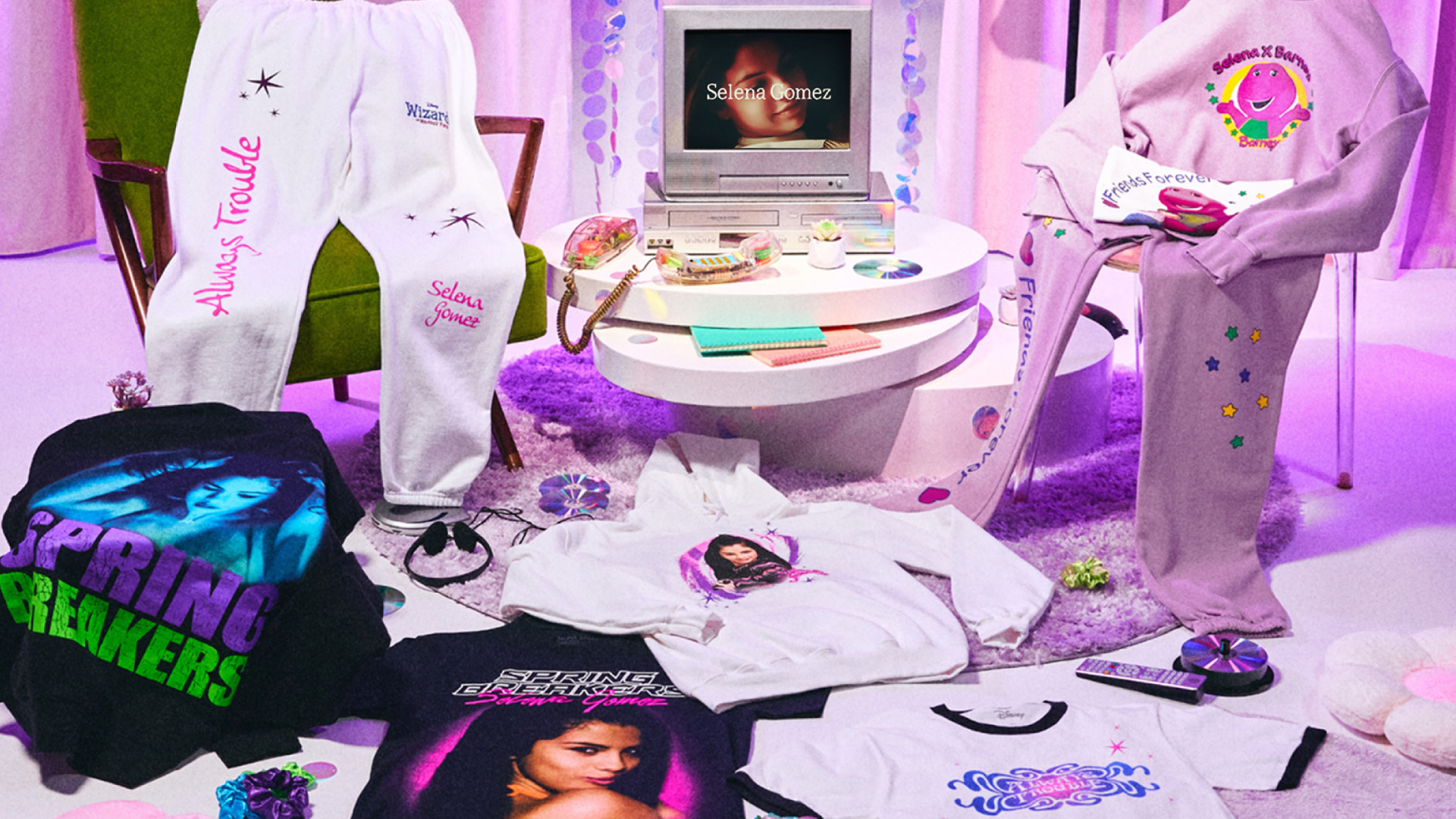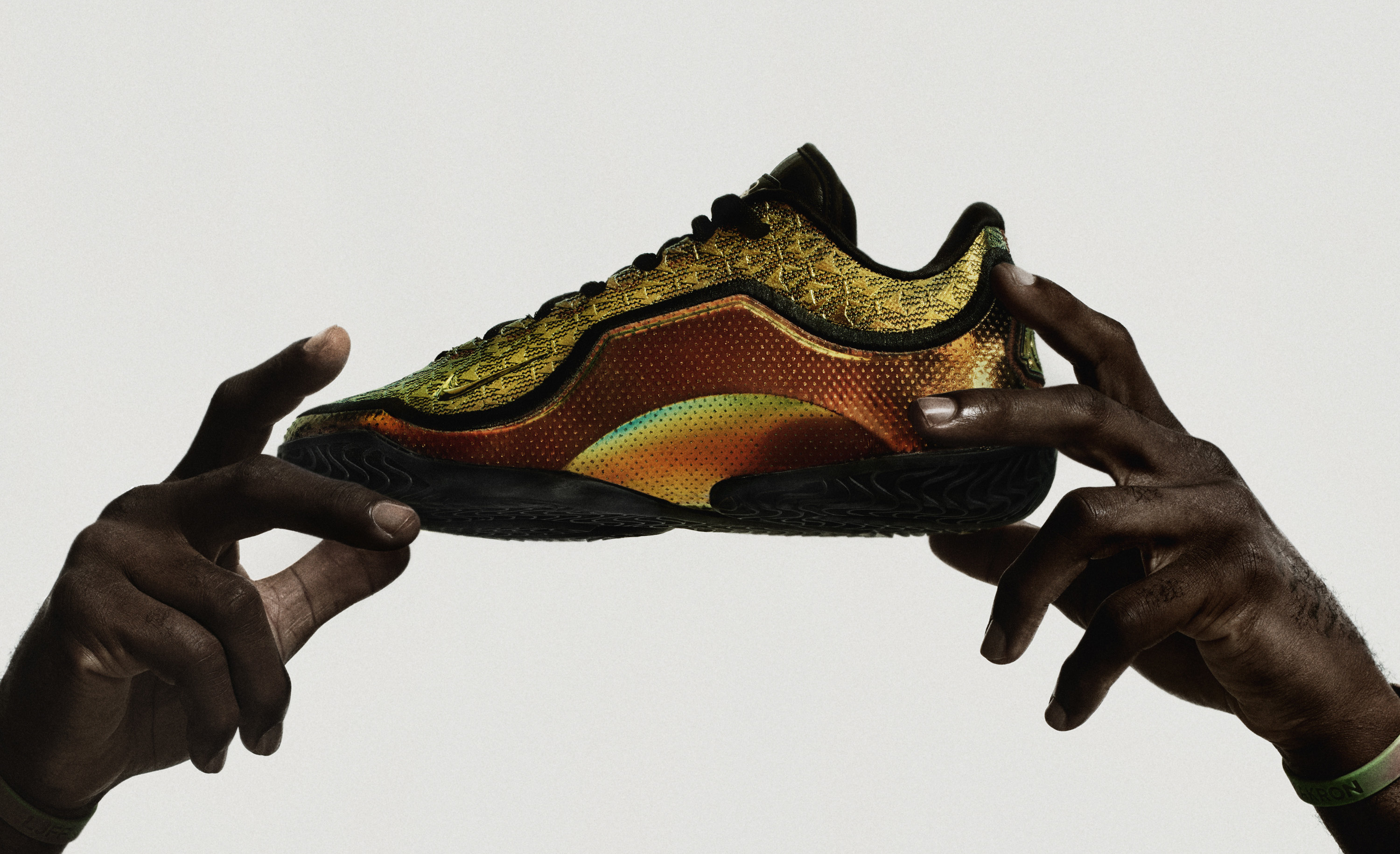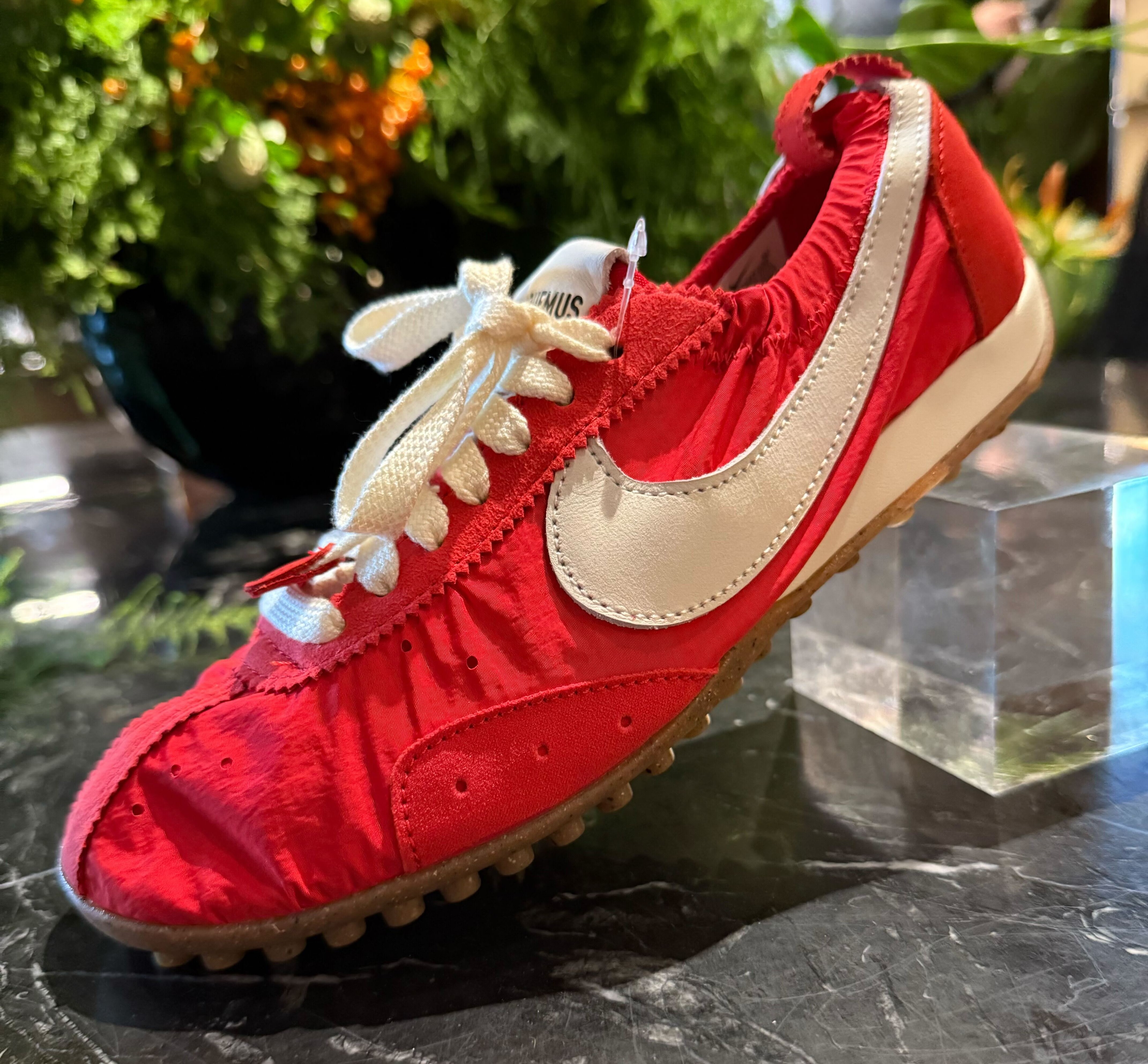The Nike Air Max line is one of the most important sneaker lines in history. From 1987, when Tinker Hatfield’s Air Max 1 introduced the world to visible Air units through a tiny window in the midsole to the full-length unit introduced with 2017’s VaporMax, the shoes have consistently represented Nike innovation at its finest.
Over the years, the various designs have developed cult followings around the world and become fixtures that people dedicate their whole sneaker collections to acquiring. The pairs that line shopping mall shelves are just as popular with the everyday consumer as the hard-to-get collaborations are with connoisseurs. Nike even crafted its own holiday to celebrate the Air Max legacy: March 26 is now known as Air Max Day in the sneaker world.
With almost four decades of Air Max silhouettes to choose from, we decided to rank the 20 best, as they currently stand. Check out the full list below.
Over a decade before the VaporMax, Nike pushed the cushioning tech to its limits with the Air Max 360. While it wasn’t the fully realized execution seen on the VaporMax, 2006’s Air Max 360 was groundbreaking in its own right. Air Max shoes before it had used “full-length” cushioning, but it didn’t actually stretch from end to end until the Air Max 360. Its design was strong, too, with a futuristic looking upper in a debut white, red, and grey colorway referencing the OG Air Max 1. The original model has yet to retro, but Nike has fused the Air Max 360’s upper with a VaporMax sole. Seeing as the VaporMax is more or less the natural evolution of the 360, it makes sense, but it wouldn’t hurt to bring back the real thing. —Riley Jones
The Air Max Light often gets overshadowed in the Air Max line, but it’s one of the best. First releasing in 1989, it falls between the Air Max 1 and Air Max 90, and was first called the Air Max II. The shoe saw a revival in the 2000s thanks to European exclusives at JD Sports that played off Air Max heritage, with some Size exclusives in the 2010s that were inspired by ACG and gained notoriety amongst Air Max fanatics. It’s not as distinct of a model, but the shoe looks great and has classic Air Max DNA. That’s why it’s here. —Matt Welty
Debuted in 1999, the Air Max Tailwind 4 was the most unique addition to the Tailwind line up to that point. Despite sharing a name, it is a far cry from the original Air Tailwind that released in 1979. Instead, it took more design cues from 1998’s Air Max Plus with a similar midsole tooling. It also marked the first time that a Tailwind model featured Air Max cushioning in the heel and forefoot. Its eye-catching volt cage overlays made the pair stand out even further. The shoes became a hot commodity among Australian prisoners and are said to be the most shoplifted shoe ever in Australia, which led them being bestowed the “Jailwinds” nickname. Despite its cult-like following in other parts of the world, the model probably got its biggest exposure stateside back in 2019 when it was brought back by Supreme in two colorways with bouclé fabric paneling. —Mike DeStefano
The Air Max2, released in 1994, is a shoe that very few people remember, but that doesn’t make it any less great. It’s never been retroed and it may never be. It’s the chunkier brethren to the Air Max2 Light, which saw a re-release in 2019, and shares the same Air unit. The original unit is similar to the heel unit on the Air Max 95, which would release a year later, and is the last Air Max model designed by Tinker Hatfield. Nike, if you’re listening, bring these back. And keep the thick mudguard and midsole. —Matt Welty
The Air Max2 (Squared) Light doesn’t have a laundry list of legendary collaborations like the Air Max 1 or deep connection to sneaker culture like the Air Max 90, but it is still a great Air Max from the brand’s stacked ’90s catalog. It debuted in 1994 as a successor to the Air Max2 and stands out for its jagged leather overlays seen across the usually colorful suede and mesh upper. The “2” in the name is a reference to the dual-chambered Air unit found under the heel. Zoom was found in the forefoot although it was then referred to as “Tensile Air.” The “Light” refers to the use of Phylon foam in the midsole to decrease weight. This under-the-radar model finally got some respect put on its name in 2019, to the delight of Air Max enthusiasts, when Nike decided to give it a pretty substantial retro run that included many of the OG colorways. Unfortunately, most of them would end up on sale racks. But that shouldn’t be held against it. This is a sleeper pick for sure. —Mike DeStefano
Why is this list so heavy on retro styles from decades past? Air Max has meant progressively less as a performance technology since its 1987 debut, meaning that more modern models usually don’t have a lot of viability for crossover success. But there are a few 21st-century icons in the Air Max range, and the 2009 is one of them. The sneaker recaptured the visual technology allure of the original Air Max with a glossy, full-length bag designed by industry journeyman Steven Smith. How impactful was it? Nike returned to that same bag for the sole units all the way through the Air Max 2012. Through its enduring status, the Air Max 2009 left a distinct footprint on the game. —Brendan Dunne
On the heels of the highly acclaimed Air Max 95, the Air Max 96 released in two different versions that each featured the same dual Air Bag setup of the previous model. First was the standard Air Max 96, with its signature tooth-like design elements on the upper. The SE variation the followed was less aggressive than the original, but still well received at the time. Neither version has received a proper retro—a 2016 edition featured an altered tooling originally found on the Air Max 95 Ultra and was universally panned by fans. While it appeared there could be a light at the end of the tunnel though for those hoping for a comeback, Supreme’s 2021 collaboration didn’t lead to much hype for the model. —Zac Dubasik
The Air Max Deluxe, first released in 2000, had to wait 18 years to see its day in the sun. The shoe had the same Air unit as the Air Max 97, which takes it down a few innovation points, but the magic is in the upper. Its printed design was a first for Air Max, and it was speckled throughout with 3M hits, making it stand out. The shoe finally saw some hype when it retroed in 2018, thanks in part to the help of a collaboration with Grime artist Skepta, but the quality of the shoe was a distant echo of the original. —Matt Welty
The Air Tuned Max is a shoe only remembered by core Air Max enthusiasts for the most part. The model first came out in 1999 and featured a near-full-length Air unit, and has never been retroed. What’s most important about the shoe isn’t just the actual sneaker itself, but rather what it inspired. In 2017, Skepta received his own collaboration on the Air Max 97 and it mimicked the design of the Tuned Max—a shared favorite of the artist and the late sneaker historian and consultant Gary Warnett, who helped him work on the shoe. The iridescent upper had never been seen on Air Max model before, and its bronze-ish colorway was unique in the overly flashy lineage of the line. —Matt Welty
With roots in a 2002 Reebok design by Steven Smith, the VaporMax was a long time in the making. Nike introduced the model for its Air Max Day celebrations in 2017 and touted it as the “pinnacle” of its Air technology. While the design itself takes pages from Smith’s work with Reebok (his name is even on Nike’s VaporMax patent), the concept of more Air was something Nike had been researching and developing since the line’s inception. With each Air Max model, the bubbles seemed to get bigger and bigger, culminating with the VaporMax, which removed all of the midsole’s foam for a cushioning setup made up of nothing but segmented Air units. It was the natural evolution of the Air Max franchise and produced memorable collaborations with the likes of Off-White and Comme des Garçons, but we’d be lying if we said it fully lived up to the hype. Depending on who you ask, the VaporMax cushioning isn’t the most comfortable, and some of the original model’s sequels have left something to be desired. That said, it’s still one of the most daring Air Maxes Nike has ever made—even if it took them 15 years. —Riley Jones
Sergio Lozano, of Air Max 95 fame, returned to the line to design the Air Max 98. The sneaker brought back the full-length Air bag of its predecessor, but its upper lacked the flowing lines that made the Air Max 97 so striking. The model was updated later that year with the Air Max 98 TL edition, which featured similar design elements on the upper and a new tooling. The often-forgotten entry to the Air Max line got a shot of hype in 2016 when Supreme collaborated on a four-shoe collection of the retro runners highlighted by a snakeskin colorway. —Zac Dubasik
A milk jug inspired Bruce Kilgore and Tinker Hatfield’s design for the Air Max 93. Sure, that definitely isn’t as cool as the fighter jets that led to his sketch of the Air Jordan 5, but it still made for a great final product. The 93 isn’t kept on shelves with much consistency and isn’t as widely-regarded as other pairs from the era, but it did do a lot to progress the line forward at the time. Its 270-degree Air unit loaded under the heel, which also led to the shoe originally being called the Air Max 270, was the biggest ever used at the time. It also introduced a neoprene bootie to the fold to enhance the fit and comfortability. Its debut “Dusty Cactus” color scheme is probably still the most recognizable iteration of the 93, with pairs like Eminem’s charitable “D12” from 2006 or 2005’s “Powerwall” release acting as some of the rare standouts that would follow it. —Mike DeStefano
What’s in a name? The ill-fated Air Stab might be the Nike best equipped to answer that, but we’ll turn here to the Air Burst, a shoe for which the moniker says more than any detailed production description could. By its release in 1994, any doubters inside the company who’d been wary about the viability of the Air Max line over the fear of the soles deflating had since been proven wrong. Now, the brand was boasting about those bubbles, and placing chunky, 270-degree ones on the heel that almost dared to be popped. Speaking of names, the Air Burst is technically not billed as an Air Max in its retro form. The shoe doesn’t come around very often, and hasn’t been in Nike’s rotation for years, but box labels for it have generally omitted the actual “Max” designation. Maybe that’s contributed to its under-the-radar status. It doesn’t carry a year with it like the most celebrated Air Maxes and it hasn’t yet been turned into a truly mainstream shoe. Instead the Burst is something of a connoisseur’s choice, a quiet hero of early 1990s design that isn’t distinct enough to warrant iconic status but is still good enough to warrant retro attention. —Brendan Dunne
Yet another Tinker Hatfield creation, 1991’s Air Max BW picked up where the Air Max 90 left off one year prior. Like the Air Max 90, the BW was originally named sequentially and was known as the Air Max 4. This time around, the expansion of the Air unit was such a focus that it led to the shoe’s eventual BW (“Big Window”) name. Its 2003 Stash collaboration and 1996 Olympic style are among the most memorable BW colorways, but it’s the OG “Persian Violet” make up that really embodies the sneaker. —Riley Jones
Another new Air bag was introduced with 1991’s Air Max 180—the biggest yet in the line. It utilized the same type of tubular-based Air unit as the Air Max 1, but eliminated the use of foam under the bag, and could be seen directly though its integrated outsole. In addition to the running version, a basketball-focused Air Force 180 was made famous by Charles Barkley in the 1992 Summer Olympics as a member of the legendary Dream Team. —Zac Dubasik
The world had never seen Air quite like this before. The Nike Air Max Plus (also known as the Air TN or Tuned 1) took the Air Max line left when it released in 1998, rearranging the pockets in the bottom of the shoe. Following up the full-length treatment on the Nike Air Max 97, the shoe compartmentalized its cushioning, using more focused hemispheres of Air for stability. From its development to its release to its impact worldwide, the Air Max Plus is one of the more fascinating models in the Air Max line.
It’s a global icon at this point, but it was more niche when it debuted, having been designed as a Foot Locker exclusive. People around the world recognize the shoe now, but its status was solidified in places like London, Paris, and Australia, where the model was a favorite amongst criminals and shady characters. It almost didn’t make it, though.
According to designer Sean McDowell, people didn’t even believe the shoe was possible at first. The gradient upper, a glowing ombre that’s outlasted its ’90s debut and manages to still sing in the 2020s, wasn’t feasible for production. The wavy cage pieces hugging the body would be difficult, too. McDowell himself pushed the project through, hitting a factory in Asia while on deadline to ensure that his sketches became reality. Foot Locker ran with the plan after seeing the samples, putting the Air Max Plus in store without warning and watching sneaker shoppers eagerly snatch them up. They’ve remained on shelves pretty consistently since, waxing and waning in popularity at times but never looking any less bold than the day they debuted. —Brendan Dunne
The Air Max 97 presented a major shift in visual technology for the line: a full-length Air bag. Forefoot Max cushioning was introduced on the Air Max 95, but it was done with a second unit. Along with that new tech came a higher price too, jumping up to $150 from the $140 price point of the previous two iterations. The sneaker was designed by Christian Tresser—who currently is working for Kanye West’s Yeezy brand—and is best known for its striking all-silver launch colorway, aptly nicknamed the “Silver Bullet.” —Zac Dubasik
The Air Max 90 is everywhere. Sure, all Air Maxes are popular to some extent, but the 90 is a favorite of casual shoppers and picky connoisseurs alike. Currently celebrating its 30th anniversary, the Tinker Hatfield design was originally known as the Air Max 3. Throughout much of the ‘90s, Nike—and especially the Air Max line—was all about pushing things forward, seldomly looking back with retro re-releases. That began to change in 2000 when the sneaker was reissued for the first time, taking on the now-ubiquitous Air Max 90 moniker. There are many things that make the Air Max 90 special, but one of its strongest attributes is its ability to shine just as strong on everyday general release colorways (look no further than the OG “Infrared”) as it does with sought-after collaborations. The latter kicked off in 2002 with the women’s-exclusive denim Courir collab and has gone on to see everyone from U.K. grime artist Dizzee Rascal to Virgil Abloh’s Off-White imprint get in on the action. Speaking of collabs, one of the most coveted is the “Bacon” special make up with shuttered NYC sneaker store Dave’s Quality Meats that retroed in 2021. —Riley Jones
It was a revolution. That’s how Nike sold it, anyway. The first Nike Air Max shoe, released in 1987, literally changed the way we look at sneakers. Brands boasted about the technology in their footwear before this, but those claims often lacked visual design elements that communicated exactly what the shoe was doing for the wearer. Nike Air cushioning was around before this, but it wasn’t until people saw those translucent pockets in the midsoles that they became obsessed. This model, known in retro form as the Nike Air Max 1 but originally called just the Nike Air Max (sneaker sequels weren’t a foregone conclusion then), is where it all changed.
The Tinker Hatfield design was like a piece of science fiction. It was flashy in color and so daring that certain people inside Nike insisted that the shoe never make it to market, worried that its bubbly bottoms would pop under pressure. Rather than burst they buoyed the brand’s market share in the late 1980s and helped create a new cult of people interesting in exactly what was happening in their running shoes. Air Max isn’t currently pitched as a true performance enhancer by Nike currently—none of its top-of-the-line runners still use the 1980s innovation—but it’s still a symbol of Swoosh magic at its finest. No sneaker captured what was in the air quite like this. —Brendan Dunne
UPDATE (8/6/25):
When we were first putting this list together, the Air Max 1 and the Air Max 95 were pretty neck and neck. The 1 eventually got the nod after some heated debate for being the origin of one of the most success sneaker lines not only under the Swoosh umbrella, but in history. Five years later, the Air Max 95 has without a doubt surpassed the Air Max 1 as number 1 in the power rankings. Again, this is a power rankings—we are not simply ranking the greatest Air Max models of all time, but the most impactful in the moment—and 2025 has been the year of the 95. We got the original “Big Bubble” shape back, along with a myriad of OG-styled colorways like “Neon,” “Blue Spark,” and “Mandarin.” On top of that, the collabs have been on point. Corteiz dropped its fourth iteration, Levi’s created a denim-clad trio and even Nike SB re-tooled the legendary silhouette for performance. Every other week it seems like either a new 95 drops or we learn of another one coming later in the year. It’ll be interesting to see if this model holds the top spot for the foreseeable future or if the Air Max 1 has something to say about it. —Ben Felderstein
The Air Max 95 has grown to become one of the most readily available models in from the Air Max lineage. You can stroll into a Foot Locker pretty much anywhere at any time and grab a pair. But that has never taken away from its legacy. Back in 1995, designer Sergio Lozano was the individual tasked with re-energizing the brand’s running category. The Air Max 95 did just that. Its non-traditional upper shrunk the signature Swoosh branding and stitched it on the lateral heel. The upper, which was inspired by the human anatomy, stood out for its layered gradient suede panels made to resemble muscle fibers and lacing setup inspired by a rib cage.
While it has become a lifestyle staple since, a favorite of the hip-hop community in particular (see The Game’s infamous, “I’ll kill you if you try me for my Air Max 95s” in 2005’s “Hate It or Love It”), it was also a revolutionary running sneaker at the time that featured blow-molded Air-Sole units under the heel and forefoot. It was the first time visible Air had been featured under the forefoot of an Air Max sneaker. The OG “Neon” colorway remains the best of the bunch to many, but various collaborations like Atmos’ “Animal” rendition, Stash’s 2006 offering, and even Supreme’s collab crafted entirely of Italian leather that dropped in 2019 have kept the model fresh and desirable despite its uptick in production over the course of its 25 year history. —Mike DeStefano
Read the full article here








